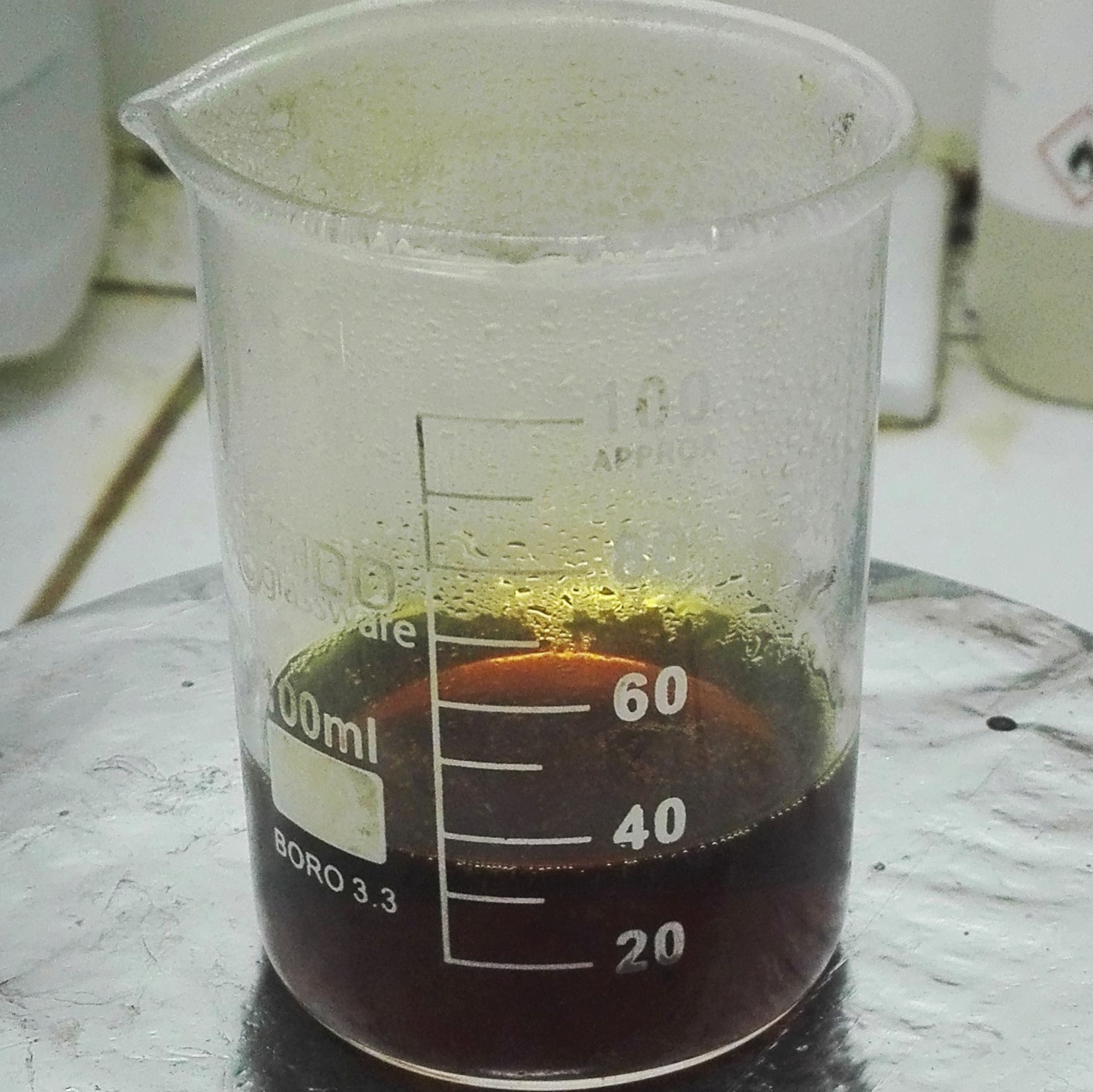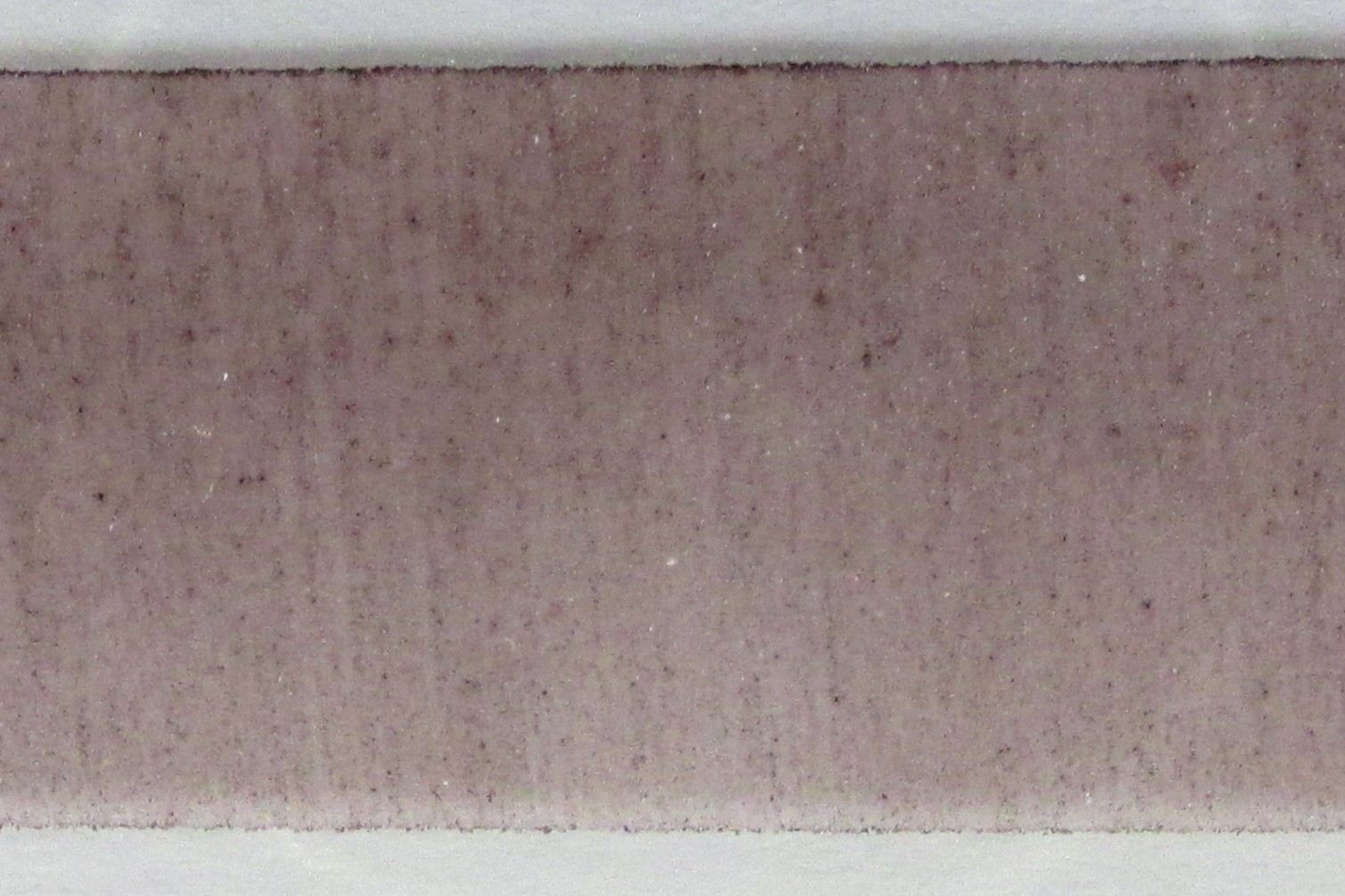Properties & Qualities
Application
Art, Sample making
Qualities
2D, Colourful, Rigid, Translucent
Colour
Brown
Sample Information
Date of creation
11/28/2019
Process & Production
According to the recipe instructions, the vitreous binder (lead-silica glass) was prepared first and consisted of (Pb3O4·SiO2 5:2 wt) following the recipe of Fondant 2 by Bontemps (1868) (Pb3O4·SiO2, 5:2 by wt). This recipe called for ferric nitrate (Fe(NO3)3) to be lightly calcined. The ferric nitrate was obtained by
dissolving iron filings (Fe) in nitric acid (HNO3) in the proportion of 1:10 by wt and the light calcination by evaporating the solution at 200°C. The resulting powder (Fe(NO3)3) was mixed and ground with the lead-silica glass in the proportion of 1:4 by wt. Finally, the powder was painted on a glass with turpentine as specified in the recipe, and the paint was fired at 620ºC for 30 minutes (ramp 3ºC/minute).
Find more at:
Â. Santos, M. Vilarigues (2019). Sanguine Paint: Production, Characterization, and Adhesion to the Glass Substrate. Studies in Conservation 64, 4, 221-239.
Recipe Details
| Ingredients: iron filings (Fe) in nitric acid (HNO3), lead-silica glass (Pb3O4·SiO2 5:2 wt), turpentine. Recipe Source: Sanguine reconstruction of a recipe by Georges Bontemps (“Guide du Verrier”, 1868, pp 732, second recipe). |
Credits
Craft Maker
Ângela Santos
Library Contributor
FCT-NOVA, VICARTE
Photographer
Ângela Santos












